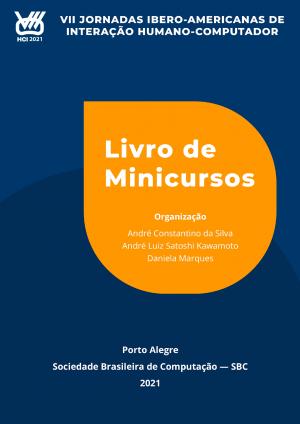Minicursos da VII Jornadas Ibero-Americanas de Interação Humano-Computador
Palavras-chave:
Interação Humano-Computador, IHCSinopse
O Livro de Minicursos HCI 2021 aborda conteúdos relacionados a Interação Homem-Computador. No primeiro capítulo, intitulado "Introdução à Acessibilidade na Web: do Conceito à Prática" os autores comentam a importância da acessibilidade nos sistemas digitais contemporâneos e apresentam alguns recursos para auxiliar na criação de páginas web acessíveis. No segundo capítulo, "Elementos Fundamentales de Propuestas de Investigación en Interacción Humano Computador", a autora mostra os elementos chaves para se realizar uma proposta de pesquisa utilizando a Metodologia da Investigação Holística exemplificada pela área de Interação Humano-Computador. O terceiro e último capítulo, com o título "Programming by Blocks", apresenta o uso da programação em bloco para ensinar pessoas sem conhecimentos técnicos. Os três capítulos deste livro possuem metodologias e ferramentas para a área de tecnologia da informação, sendo uma obra útil principalmente para pessoas que querem iniciar nas respectivas áreas abordadas.
Capítulos
-
1. Introdução à Acessibilidade na Web: do Conceito à Prática
-
2. Elementos Fundamentales de Propuestas de Investigación en Interacción Humano Computador
-
3. Programming by Blocks
Downloads



